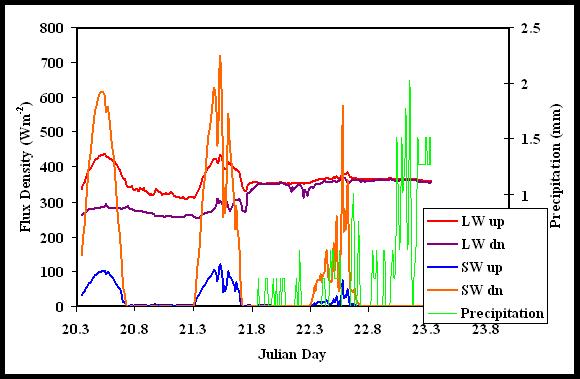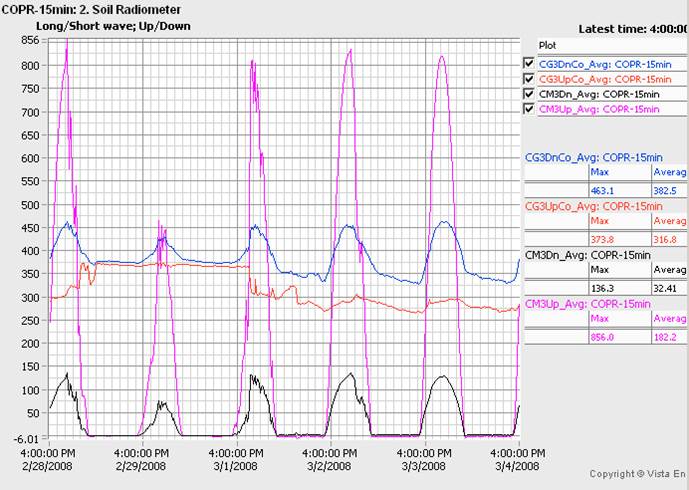Radiation usually refers to "electromagnetic radiation," which is a form of energy that moves at the speed of light and is made of photons, which are tiny particles of energy that have wave-like properties such as wavelength, period, and frequency.
Shortwave radiation is radiation with short wavelengths (typically around 0.4 to 2.5μm), usually referring to the part of the electromagnetic spectrum dominated by incoming solar radiation (Roberts 2007), which is also known as insolation (Ahrens 2007). Radiation with longer wavelengths (generally around 2.5 to 14μm) is known as longwave radiation, typically corresponding to the part of the spectrum dominated by radiation emitted by the Earth's surface and atmosphere (Roberts 2007).


